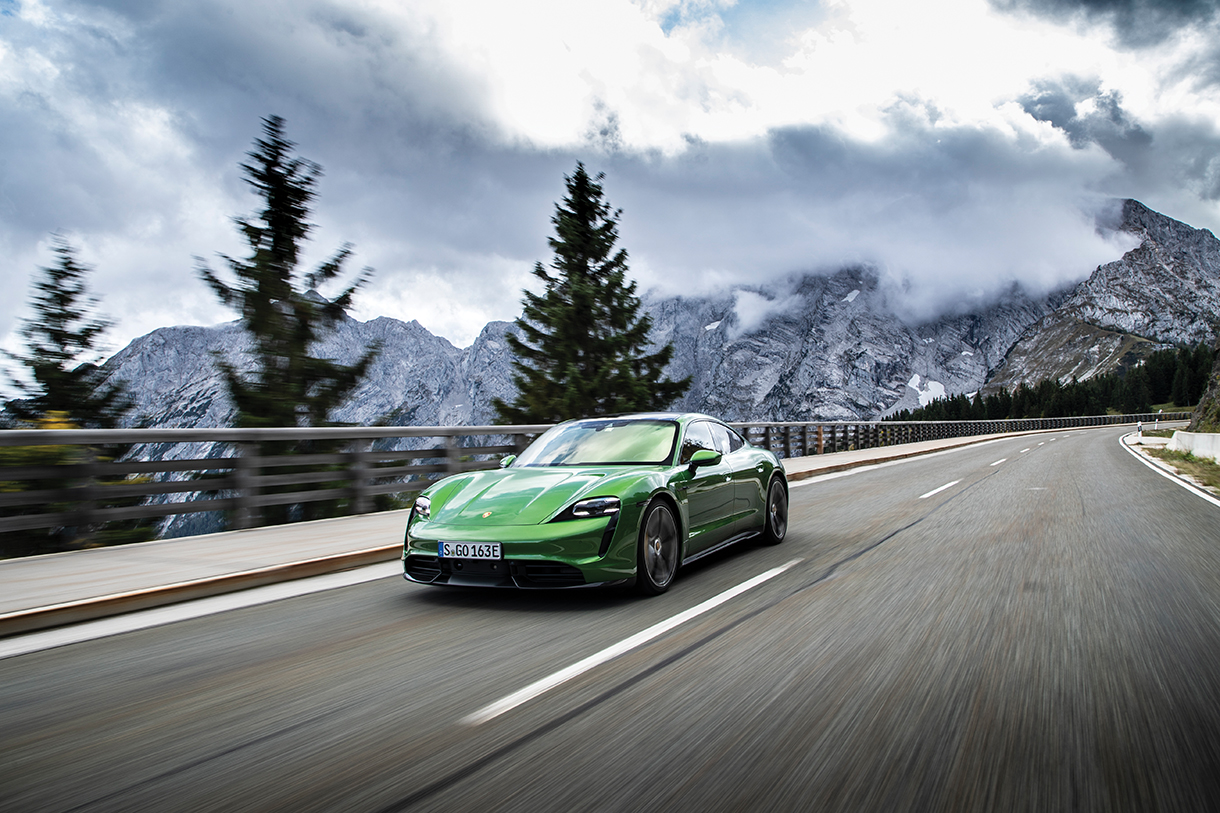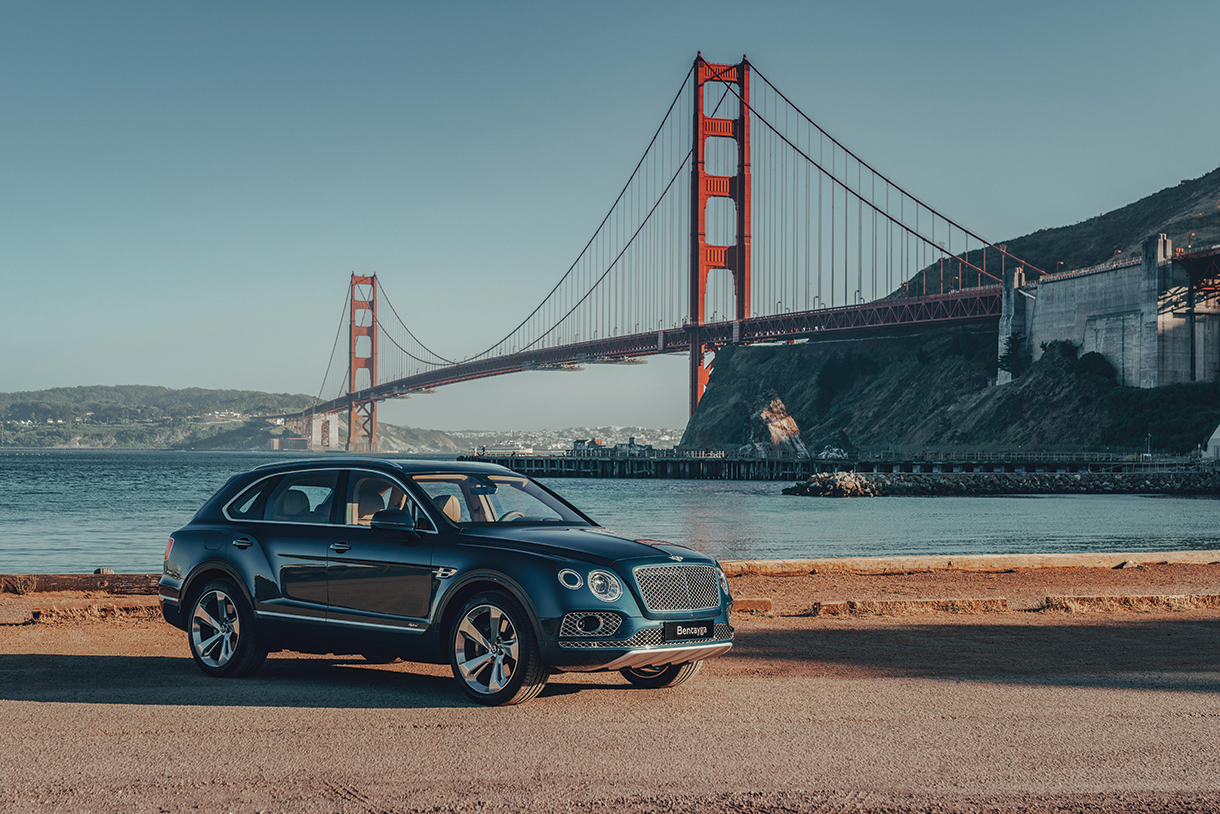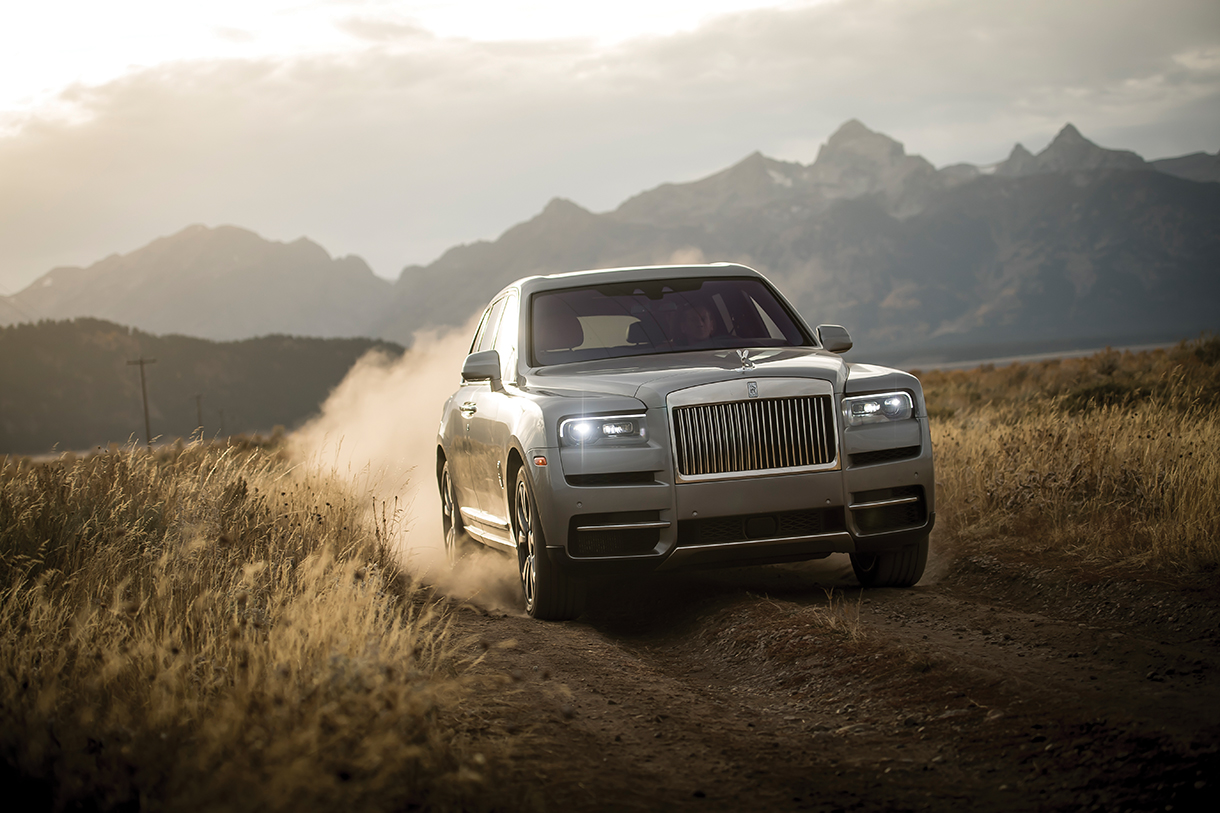
All-Wheel All-Stars
Adventure-ready hybrid utes or track-tuned supercars, the choice is yours.
Not so very long ago, the idea of a vehicle that sends power to all four wheels at the same time seemed impractical—unless you were driving a farm implement or a safari-bound SUV. There was the weight of the system to deal with, the lack of efficiency, and the mechanical complexity. All of these factors bear consideration if your goal is higher performance in a variety of settings, not just across the nearest wheat field or sand dune.
Nowadays, though, all-wheel-drive vehicles are powered by the latest engineering, infused with lightweight materials, and governed by super-smart onboard computers, making these rides more entertaining, more capable, and, yes, more practical, than ever before. —Mark Hacking
Lamborghini Huracán EVO
Representing the pinnacle of Huracán engineering, the EVO, according to Lamborghini’s reports, is a tick faster around the track than the Performante, the vehicle on which it’s based.
Lamborghini took the Performante’s 640-hp, naturally aspirated V-10, with 442 ft lbs of torque, updated the front and rear aerodynamics, and added its proprietary Lamborghini Dinamica Veicolo Integrata program. That mouthful, conveniently named LDVI, pulls data from 240 sensors and inputs around the car. It monitors the variable torque vectoring system, which (for the first time in a Lamborghini) varies the torque between all four wheels, not just front and rear, along with four-wheel steering, traction control, suspension settings, and the Lamborghini Piattaforma Inerziale. The LPI contains a series of accelerometers and gyroscopic sensors that monitor the real-time position of the car, including roll, pitch,yaw, and lateral and vertical acceleration. All these Italian acronyms boil down to a system that predicts and anticipates, rather than fixes, what the driver is trying to do. Imagine it as HAL from 2001: A Space Odyssey, but this time he’s opening the pod-bay door before you ask.
The computing power in the LDVI and LPI systems is robust enough to make corrections to all the car’s systems within 20 milliseconds. To put that in perspective, an eye blink takes about 100–150 milliseconds. In Sport Mode (Lamborghini engineers’ favorite), the car feels almost playful as you flick it around corners. Get on it a little hard, and the EVO will brake the inside wheels, add torque to the outside, and adjust the all-wheel steering to put the car back on the right apex.
Drive hard on the track, and if you make a mistake, the car acts like an active partner, adding just a bit of computer power to correct you and move you faster through the corners. In the real world, what this means to a driver is the car can’t put a foot, er wheel, wrong. And that is an evolutionary step, er wheel, forward. $261,274; lamborghini.com. —David Keith

Porsche Taycan Turbo S
In September, for the worldwide launch of the Taycan Turbo S, the first battery-electric vehicle in its history, the Porsche brain trust had a big challenge on its hands: How would they demonstrate the capabilities of the car without the specter of range anxiety making an appearance?
The drive route kicked off in Oslo, Norway, touched down in seven more countries, and stretched for 4,000 total miles, ultimately concluding in Stuttgart, Germany, where the car is built. The trip highlighted the strengths of the Porsche as a driver’s car on everything from single-lane country roads to the high-speed corridor that is the famed Autobahn. High-speed recharging stations along the route showed how quickly the 93.4 kWh battery pack can be replenished.
In both respects, the Porsche proved an absolute winner.
First things first: The Taycan Turbo S is quick—very quick. In overboost mode, when using the launch control system, the sedan is rated at a staggering 750 hp and 774 ft lbs of torque. The accelerator pedal is like a light switch and the response from the motors—one mounted at the front axle, the other at the back—is immediate. Porsche claims that 60 mph appears in just 2.6 seconds, but the car feels even quicker.
With the motors at both axles, this Porsche has an all-electric version of all-wheel drive, which helps put the power to the ground. The front motor utilizes a single-speed transmission, but the motor at the back features a unique two-speed transmission, which promotes maximum acceleration in first gear and a higher top speed in second gear. That top speed, Porsche claims, is 161 mph, but even higher numbers were achieved during blasts along the Autobahn. A different set of impressive numbers was seen at recharging stops. The first production EV with 800-volt technology, the Porsche can achieve 80 percent battery charge in just over 22 minutes, provided the charging station is up to the task.
The Porsche Taycan Turbo S is not the EV you would choose to commute great distances in absolute silence. Rather, this is an authentic high-performance sedan to take on a country drive, just for the sake of driving. The feel of the steering, the way the car tackles corners, and the way it responds to weight transfer—all are authentic Porsche, through and through. $185,000; porsche.com —M.H.

Bentley Bentayga Hybrid
Sometimes, a rewarding experience behind the wheel has nothing to do with your top speed or your ability to climb a mountain; sometimes, it’s as simple as turning the everyday commute into something more. The Bentley Bentayga Hybrid does a lot of things exceedingly well, but the facility with which it shakes loose from the mundane verges on magical.
The first plug-in hybrid in Bentley history, the Bentayga is powered by a turbocharged 3.0-liter V-6 paired with a 94 kW electric motor. The combination serves to produce 443 hp and 516 ft lbs of torque, which is routed to all four wheels through an 8-speed automatic transmission. The powertrain is more than substantial enough to hustle this SUV down the road; more importantly, the Bentayga Hybrid can travel at speeds of up to 84 mph and go for as long as 16 miles on electricity alone.
While this might not seem that impressive on paper, the drive experience with the Bentley in Silicon Valley proved that it has genuine real-world versatility. At the end of a traffic-congested few hours, the battery had more range available than when it started. The key here is the expert manipulation of the three drive modes—EV Drive, Hybrid, and Hold—working with assistance from the navigation system, which uses predictive modeling to reduce fuel usage and boost overall efficiency. Under light acceleration, the Bentayga Hybrid can run on electric power alone. When more power is needed, the engine kicks in automatically. When you want to save the battery, you can select the Hold mode and the SUV runs on the engine alone.
In most other respects, the Bentayga Hybrid is just like other models in the British marque’s fleet. Apart from an instrument panel that switches according to the drive status, the passenger compartment is largely a familiar one: solid, whisper-quiet, and supremely luxurious. This is a hugely desirable hybrid—and it’s the most value-packed Bentayga on the block. $160,000; bentleymotors.com —M.H.

Rolls-Royce Cullinan
In certain ways, the most traditional of AWD vehicles among this select gathering, the Cullinan, by its silhouette alone, is clearly an SUV—the first in the storied history of Rolls-Royce. Under the elongated hood is a fairly traditional engine as well: a twin-turbocharged 6.75-liter V-12 that runs solely on premium unleaded gasoline. This engine generates 563 hp and 627 ft lbs of torque, sufficient to propel this rock-solid mass across all manner of terrain in hushed comfort.
In other ways, though, the Cullinan represents a completely non-traditional driving experience, different from anything else on the planet. On paved surfaces, it’s very much a Rolls-Royce, like a tall Phantom or a boxier Wraith, engineered to power across great distances unperturbed. Where things get interesting is where the pavement ends. On gravel the big Rolls roars, its AWD system expertly shuttling engine torque forward and aft as conditions warrant. Surprisingly, it’s possible to coax the back end of the Cullinan to slide out around the bends—no severe angles, of course, just enough to prove that this SUV could be at home on the range.
The Rolls is perhaps even more impressive during a sharp climb up the aptly named Snow King Mountain in Wyoming. Enabled by a decently small turning circle and an air suspension system that expertly soaks up imperfections, the Cullinan makes quick work of the elevated, serpentine trail leading to the precipice. Not once do the massive tires scramble for traction; at no point does the Cullinan feel remotely barge-like; never does it seem to be close to its theoretical limits.
The crowning glory of this remarkable feat of engineering is that the Cullinan is a true Rolls-Royce—it’s immaculate. The passenger compartment is equipped with all manner of standard features designed to isolate you from the world outside. In terms of customization possibilities, the sky is the limit. The one must-have option is the viewing seats and cocktail table that pop out of the rear hatch, taking tailgating into the realm of high art. From $330,000; rolls-roycemotorcars.com. —M.H.




